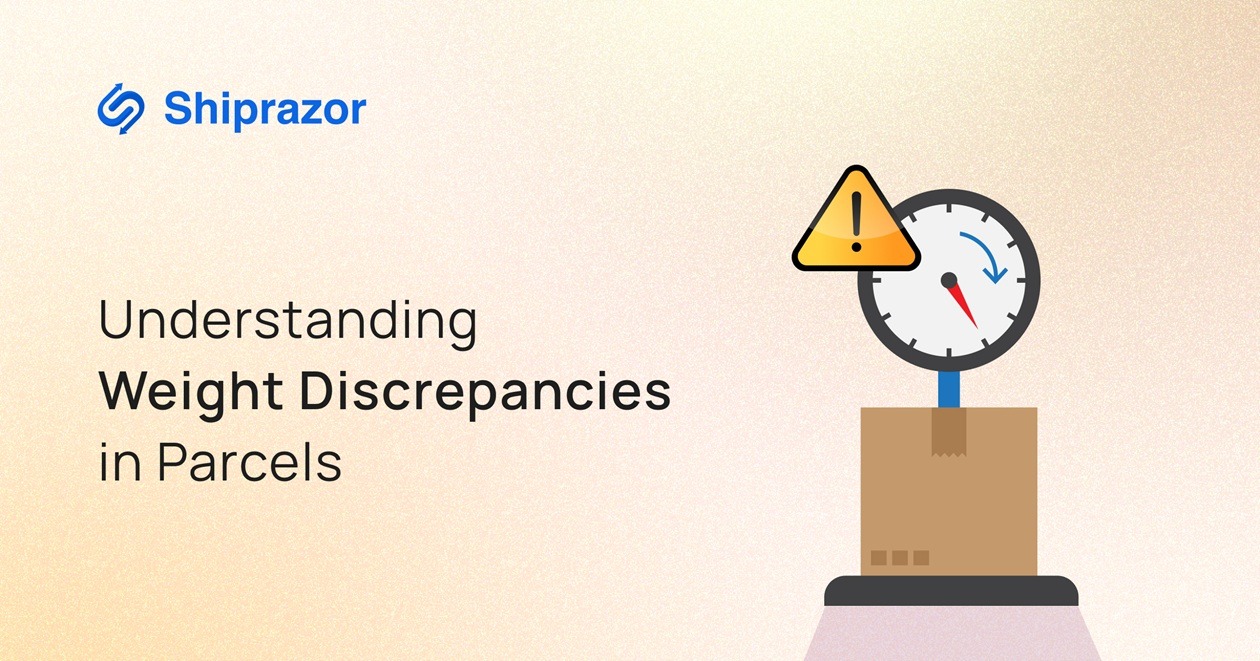As we are all aware, millions of parcels are shipped every day to make consumers’ lives more efficient. Therefore, more and more weight has been placed on each gram of weight that is being shipped. This has given rise to a new difficulty that is being faced by every courier partner in South Africa alike – weight discrepancy. It means that there is a difference in the weight that is declared and the weight of the parcel that is actually shipped to the consumer.
So what are the implications of weight discrepancies for delivery partners? While the problems may not be visible in the short run, they can severely hamper the relationships of individual organizations and also cause multiple billing problems.
If a business wants to function most transparent manner, it must understand the meaning and long-term effects of weight discrepancies.
Weight Discrepancies: Explained
As we have mentioned earlier, a weight discrepancy can happen when the declared weight of a parcel is different from the weight recorded or perceived in the delivery partner’s record systems. Let us assume that there is a discrepancy of half a kg in the weight declared and the weight perceived. This minor weight discrepancy can lead to cost adjustments, delays, and even the reclassification of shipments. These can lead to major operational inefficiencies and significant costs in the long run.
What Are The Implications of Weight Discrepancies?
The weight of any parcel can help in deciding the shipping rates, automated sorting, vehicle capacity, and even fuel efficiency. All of these factors can together affect the efficiency of the operational and logistics department. It can have the following implications for the different areas of work-
For Consumers
The customers can suffer from delayed shipments and even unexpected surge charges. This can significantly hamper the trust that customers hold in the brand.
For eCommerce Retailers
When the delivery partners revise the costs for shipping, it often leads to discrepancies and increased charges. This can severely hamper the relationship between the delivery couriers and retailers.
For Delivery Partners
The data that is provided to the delivery partners is used to optimize routes, charge clients, and allocate capacity. In case of frequent weight discrepancies, it can lead to inaccurate billing and overburdened vehicles. It also has a significant impact on the load balancing and route optimization.
What Factors Can Potentially Cause Weight Discrepancies?
Weight discrepancies mostly occur because of negligence and misinterpretation. Even while they might not be frequent, they can affect the operation efficiency os businesses. They usually arise because of the following reasons-
Manual Errors
In places like small warehouses, there is a high chance of the parcels being weighed manually. The differences can arise because of outdated scales, human error, or calibration. These errors are easily detected in the automated weighing systems used by delivery channels.
Multiple Handling Points
Multiple stages might be involved in the scanning of a parcel. These include merchant hubs, delivery partner hubs, and regional depots. Each of these touchpoints might have a different standard for the equipment, which might lead to discrepancies.
Variations in Fillers and Packaging
Certain changes can happen at the last minute. The delivery partners can decide to add bubble wraps, fillers, and tape. This can lead to a slight increase in weight, which might not be recorded in the system. These parcels can detect a higher value in the later stages, which can lead to bigger discrepancies.
Under-declaration
To save on the shipping costs, several delivery partners might deliberately under-declare the weight of their parcels. To maintain fairness, it is important for delivery partners to swiftly address such cases.
Miscalculations Related to Dimensions
When a parcel’s size exceeds its actual mass, the courier partners can often charge by the dimensional weight. The dimensioners and carrier scanners can often record a higher weight, which can become problematic in the later stages.
What Happens When You Ignore Weight Discrepancies?
Weight discrepancies can have the following implications for delivery partners-
- It might entail penalties for customers in the case of international shipping.
- There can be risks associated with the route optimization and load planning.
- It can lead to increased customer dissatisfaction because of delayed deliveries and frequent re-billing.
- If the weights are under-declared, it can also mean revenue leakage and lost income.
How Can Delivery Partners Help Avoid Weight Inaccuracy?
Delivery partners play an instrumental role when it comes to the movement of parcels in South Africa. They provide the required bridge between the customer experience and the information declared by the merchants. The delivery partners can ensure operational efficiency in the following ways:
- Introduction of dimensioning systems and automated weighing
- Ensuring regular compliance audits and calibration checks
- Creating more awareness through employee training
- Making full use of predictive analysis and artificial intelligence
- Having a dispute resolution framework in place
- Ensuring complete transparency of data
- Improving the equation between the delivery partners and fulfillment centers
The Role of Technology In Ensuring Weight Accuracy
In South Africa, there has been a significant transformation when it comes to the integration of the latest technology. We are now making full use of artificial intelligence, IoT-enabled hardware, and automation. This has enabled the delivery partners to function with the utmost level of efficiency.
In the future, every parcel will eventually be tracked and measured by data, backed by blockchain verification. All the important documents, such as the declared weight and the recorded weight, will be shared in a common folder. This will lead to a reduced number of discrepancies for the delivery partners. It will also help them ensure shipment integrity.
Final Thoughts
The weight discrepancies can reflect the transparency, alignment, and technology adoption for the ecommerce partners. To resolve the challenges posed by the weight discrepancies, the delivery partners can adopt the latest technology, reinforce discipline in their daily activities, and maintain transparency with the merchants. Subsequently, weight discrepancies will no longer be the traditional pain points. They would rather become a mark of reliability for ecommerce deliveries. It can give companies the required competitive edge and build their credibility in the global market.

